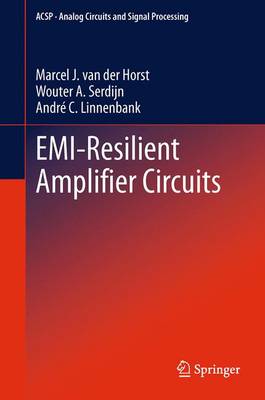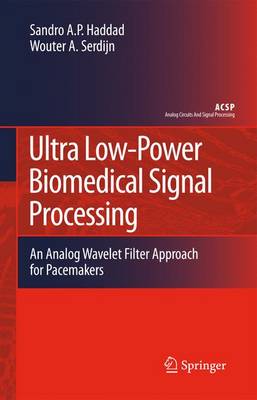Analog Circuits and Signal Processing
1 primary work • 2 total works
Book 118
EMI-Resilient Amplifier Circuits
by Marcel J. van der Horst, Wouter A. Serdijn, and Andre C. Linnenbank
Ultra Low-Power Biomedical Signal Processing
by Sandro Augusto Pavlik Haddad and Wouter A. Serdijn
Often WT systems employ the discrete wavelet transform, implemented on a digital signal processor. However, in ultra low-power applications such as biomedical implantable devices, it is not suitable to implement the WT by means of digital circuitry due to the relatively high power consumption associated with the required A/D converter. Low-power analog realization of the wavelet transform enables its application in vivo, e.g. in pacemakers, where the wavelet transform provides a means to extremely reliable cardiac signal detection.
In Ultra Low-Power Biomedical Signal Processing we present a novel method for implementing signal processing based on WT in an analog way. The methodology presented focuses on the development of ultra low-power analog integrated circuits that implement the required signal processing, taking into account the limitations imposed by an implantable device.

